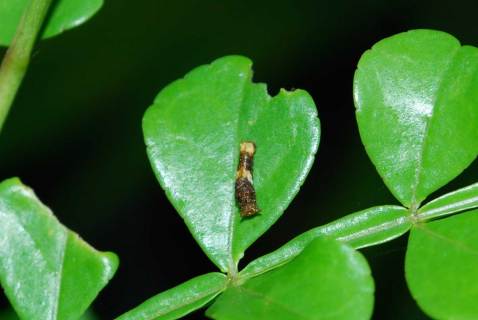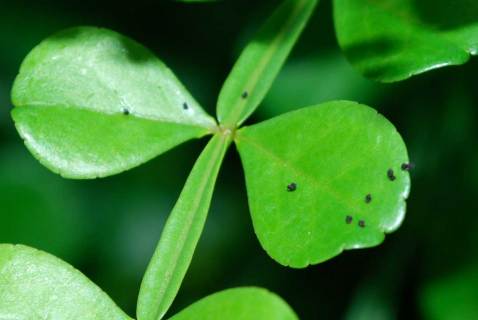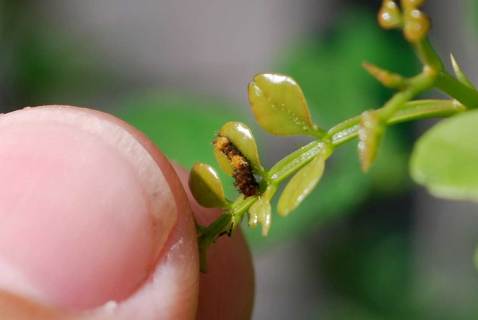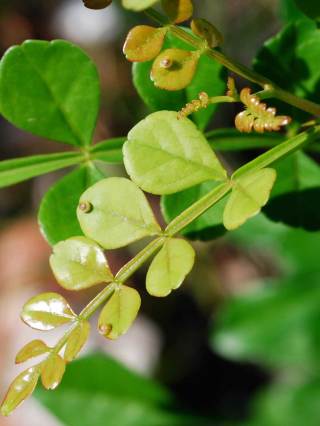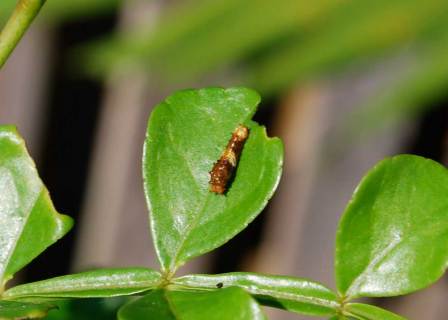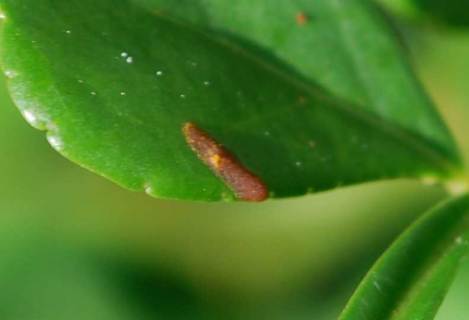Last week I posted about my first sighting of the Giant Swallowtail caterpillar on my wild lime. Well, after just one day, the thrill was gone. The day after that first encounter, the large caterpillar was nowhere in sight, but I found no fewer than seven individual early instar caterpillars on this very small bush, with three eggs. And if that’s how many I found, I shudder to think how many I missed! I’ll let them stay on for now, but if they start defoliating this plant, I’m going to have to “take steps.”
Here are a few snapshots of the little buggers.
Note how it’s taken a few large divots out of the leaf it’s resting on. In this shot, you can see the by-product, known as frass:
Here’s another shot of one of the caterpillars:
I’m really not that bad a photographer; I deliberately left my thumb in the frame for a size reference. These guys are A LOT smaller than the large one I saw on Monday.
It’s important to be observant when you’re out in the field; otherwise you might overlook something. For example, here’s a lovely shot of two eggs I found:
Anyone who can count will see that there are three eggs in the frame, even though I saw only two when I was taking the picture. Yup. Ya gotta be observant when you’re out in the field.
Here’s another shot of a caterpillar; not the same one, of course (look at the leaf it’s on):
And a detail of one of the eggs; how I wish I had a macro lens!
Unfortunately I didn’t get a good shot of the second instar caterpillar, but perhaps you can still see from this out-of-focus image that by the first molt the tubercles and hairs disappear, to be replaced by a much smoother, more “bird-dropping-like” appearance:
I’m not sure what that means, other than that I need to start bringing a tripod into the field so I can get better pictures. That, and I need to wait for the wind to die down. Patience, grasshopper.
So far I don’t think I’ll need to resort to removing the larvae; the first day I noticed them, there were at least seven, but by the very next day, the count had dropped to only three or four. I think this little plant can sustain that level of herbivory, but I’ll keep an eye on the situation to be sure.

